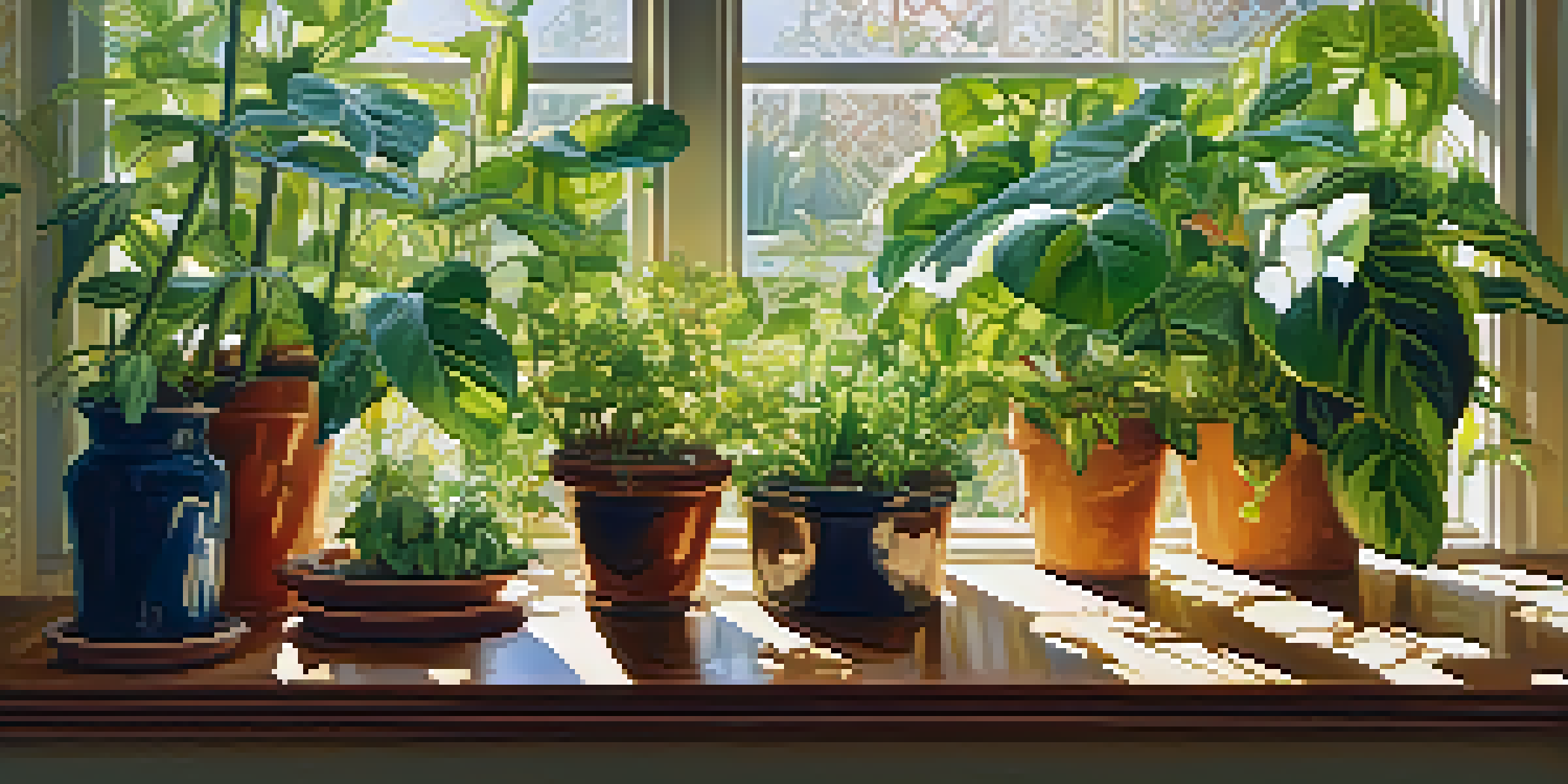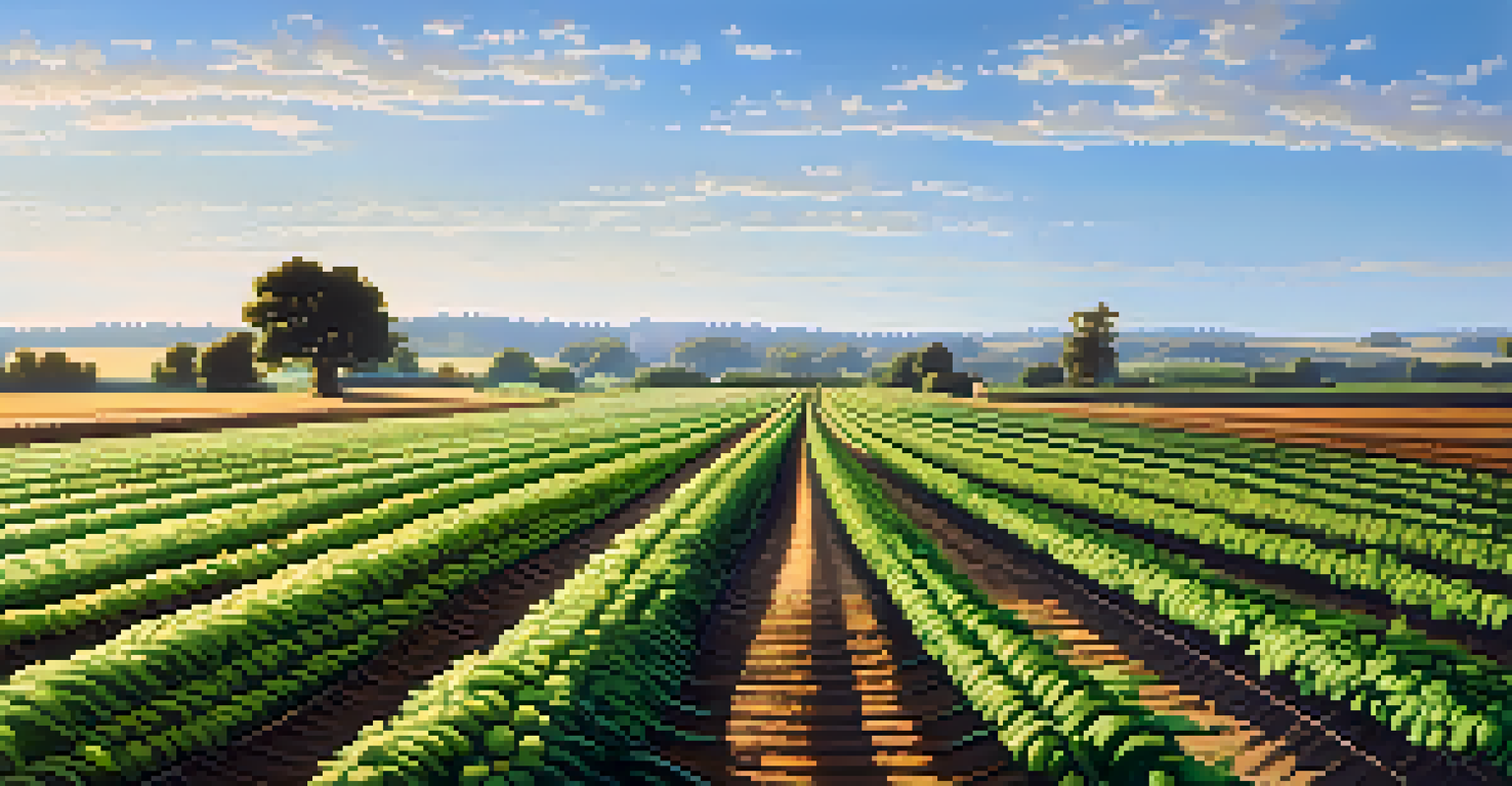Phototropism: How Plants Grow Towards Light Sources

What Is Phototropism and Why Does It Matter?
Phototropism is the phenomenon where plants grow towards a light source. This natural behavior is crucial for their survival, as light is essential for photosynthesis— the process plants use to convert sunlight into energy. By bending their stems and leaves towards the light, plants maximize their ability to absorb sunlight, which in turn supports their growth and development.
Plants are like people; they respond to their environment and adapt to what they receive. Light is their lifeline.
This adaptive strategy not only helps plants thrive in their environment but also showcases the intricate relationship between plants and light. For instance, think of a sunflower that turns its head to follow the sun throughout the day—this is a perfect example of phototropism in action. Without this ability, plants would struggle to compete for light, a vital resource.
Understanding phototropism can also shed light on how plants adapt to various environments. For gardeners and farmers, knowing how plants respond to light can influence their growth strategies, leading to healthier and more productive plants.
The Science Behind Phototropism: How It Works
At the heart of phototropism is a hormone called auxin, which plays a key role in plant growth. When light hits one side of a plant, auxin is distributed unevenly, accumulating more on the shaded side. This uneven distribution causes the cells on the shaded side to elongate faster than those on the light-exposed side, resulting in the plant bending towards the light source.

To illustrate, imagine a child playing on a seesaw. When one side is weighed down, the other side rises. Similarly, when auxin promotes growth on one side of the plant, it tilts towards the light. This fascinating process not only helps plants reach for light but also demonstrates how they can respond dynamically to their environment.
Plants Grow Towards Light Sources
Phototropism enables plants to bend and grow towards light, maximizing their ability to absorb sunlight for photosynthesis.
This hormonal response is not just limited to sunlight; plants can also react to artificial lighting, which is particularly important in urban settings where natural light may be scarce. Thus, understanding how light influences plant growth can help us create better environments for our green friends.
The Role of Light Wavelengths in Phototropism
Not all light is created equal when it comes to phototropism. Different wavelengths of light can elicit various responses in plants, with blue light being particularly effective in promoting growth. Plants contain photoreceptors called phototropins that are sensitive to blue light, allowing them to detect the direction from which light is coming.
Nature always wears the colors of the spirit.
Think of this like a plant's GPS system; it helps them navigate towards the best light sources. When plants sense blue light, they respond by bending and growing towards it, optimizing their exposure to this crucial wavelength. This is why you might notice plants growing more vigorously near windows where blue light is prevalent.
Furthermore, understanding the impact of light wavelengths can be beneficial for indoor gardening. By using grow lights that emit the right spectrum, gardeners can encourage healthy plant growth even in dimly lit spaces.
Phototropism vs. Gravitropism: Key Differences
While phototropism is all about light, gravitropism refers to how plants respond to gravity. Roots typically grow downwards due to gravitropism, while stems tend to grow upwards. Both processes are critical for a plant's growth and survival, yet they serve different purposes in helping the plant navigate its environment.
Imagine a plant as a traveler: phototropism helps it seek out the sun, while gravitropism ensures it stays anchored in the soil. These two responses work together, allowing plants to grow optimally in their habitats. Without gravitropism, plants would struggle to establish a stable foundation.
Auxins Direct Plant Growth
The hormone auxin plays a crucial role in phototropism by causing uneven growth on shaded sides of plants, leading them to tilt towards light.
The interplay between phototropism and gravitropism demonstrates the incredible adaptability of plants. Their ability to respond to multiple stimuli allows them to thrive in various conditions, highlighting their resilience as living organisms.
The Importance of Phototropism in Agriculture
In agriculture, understanding phototropism can significantly impact crop yield and quality. Farmers can manipulate light exposure by arranging plants in optimal positions or using reflective materials to direct light. By doing so, they can encourage even growth and maximize photosynthesis across their fields.
For instance, crops that are spaced correctly can receive adequate sunlight, reducing competition and promoting healthier plants. This knowledge allows farmers to make informed decisions, leading to more efficient farming practices and better harvests. It's like giving plants a guiding hand to ensure they reach their full potential.
Additionally, as urban farming becomes more popular, the principles of phototropism can help optimize vertical gardens and indoor farming setups. By applying these insights, anyone can become a successful urban gardener, regardless of space limitations.
Phototropism in Everyday Life: A Closer Look
Phototropism is not just a scientific concept; it's something we can observe in our everyday lives. Consider how houseplants often lean towards windows where sunlight streams in. This natural behavior is a reminder of their need for light and can guide us in positioning our plants for optimal growth.
By paying attention to how our plants respond to light, we can create nurturing environments that promote their health. For instance, rotating plants regularly can ensure they grow evenly and don’t become lopsided. It’s a small but impactful practice that can lead to a thriving indoor garden.
Light Wavelengths Affect Growth
Different wavelengths of light, particularly blue light, significantly influence plant growth, making it essential for gardeners to consider light quality.
Moreover, understanding phototropism can inspire us to choose the right plants for different areas in our homes. Some plants thrive better in low light, while others crave direct sunlight. By aligning our choices with their natural preferences, we can enjoy a vibrant and lush living space.
Future Research: Advancements in Phototropism Studies
As science progresses, researchers are continually exploring the complexities of phototropism. Advanced studies are focusing on genetic factors that influence how plants respond to light, which could lead to innovations in agriculture and horticulture. By understanding the genetic makeup of plants, scientists can potentially breed varieties that are more efficient at seeking light.
Think of this research as creating a super plant—one that can thrive even in challenging conditions. Such advancements could revolutionize how we approach food production, especially in areas with limited sunlight. It’s an exciting frontier that holds promise for sustainable agriculture.

Additionally, as climate change impacts global weather patterns, understanding phototropism could help scientists develop resilient plant varieties. Adapting to changing environments is crucial, and phototropism research might just play a key role in that adaptation.